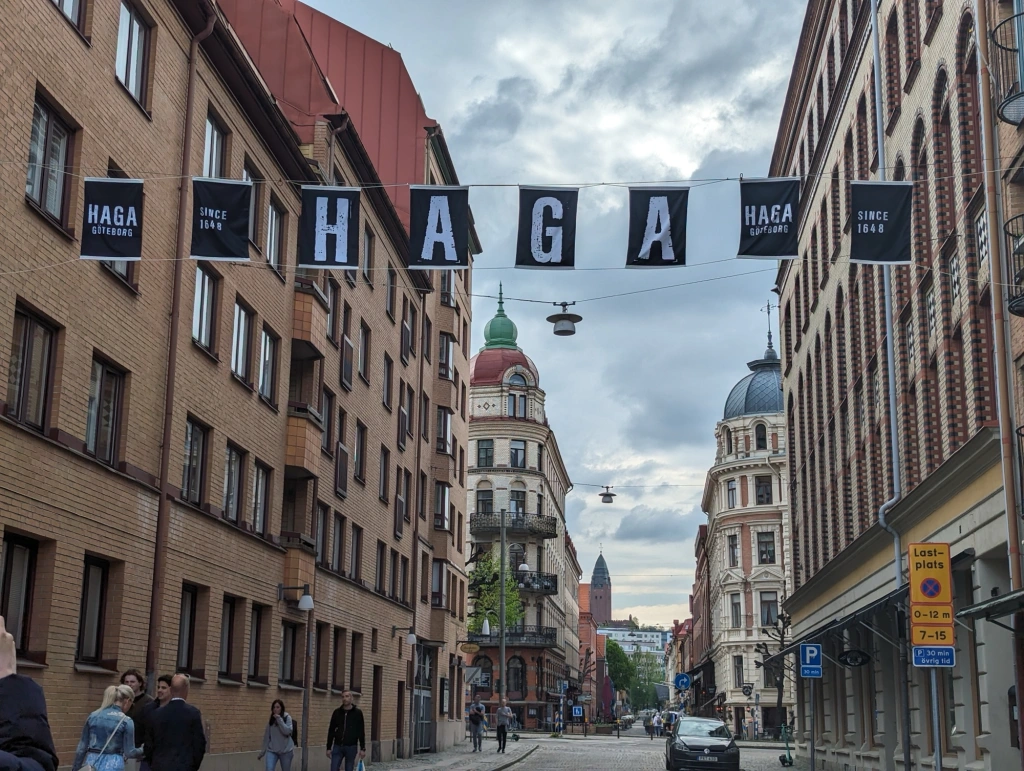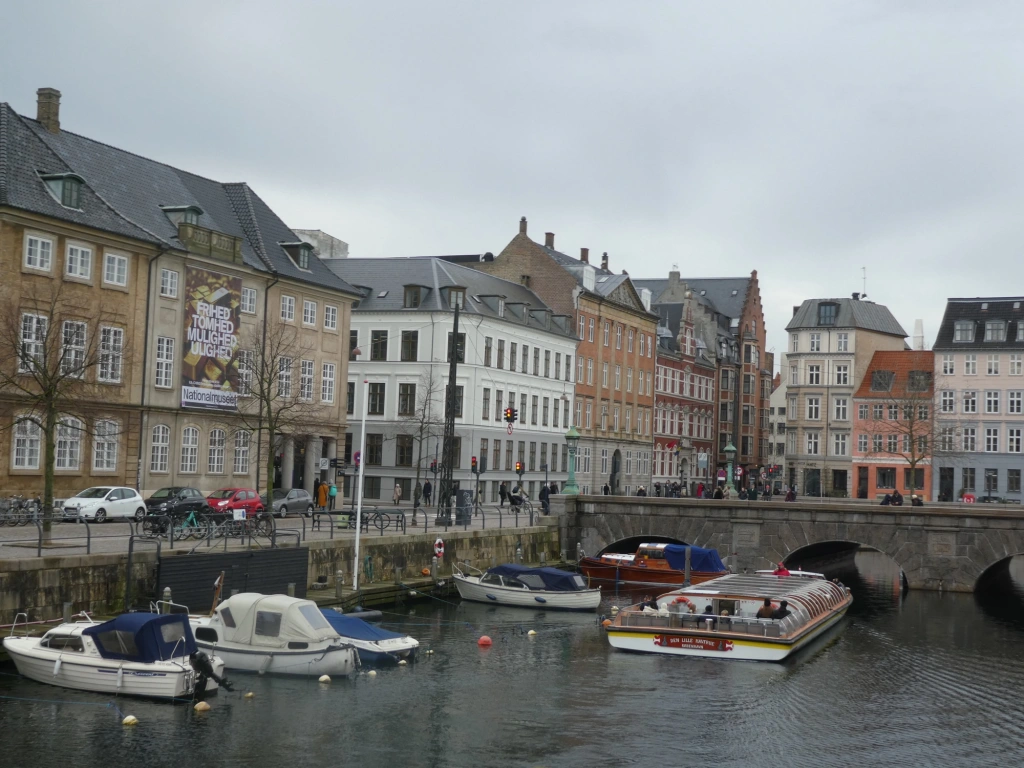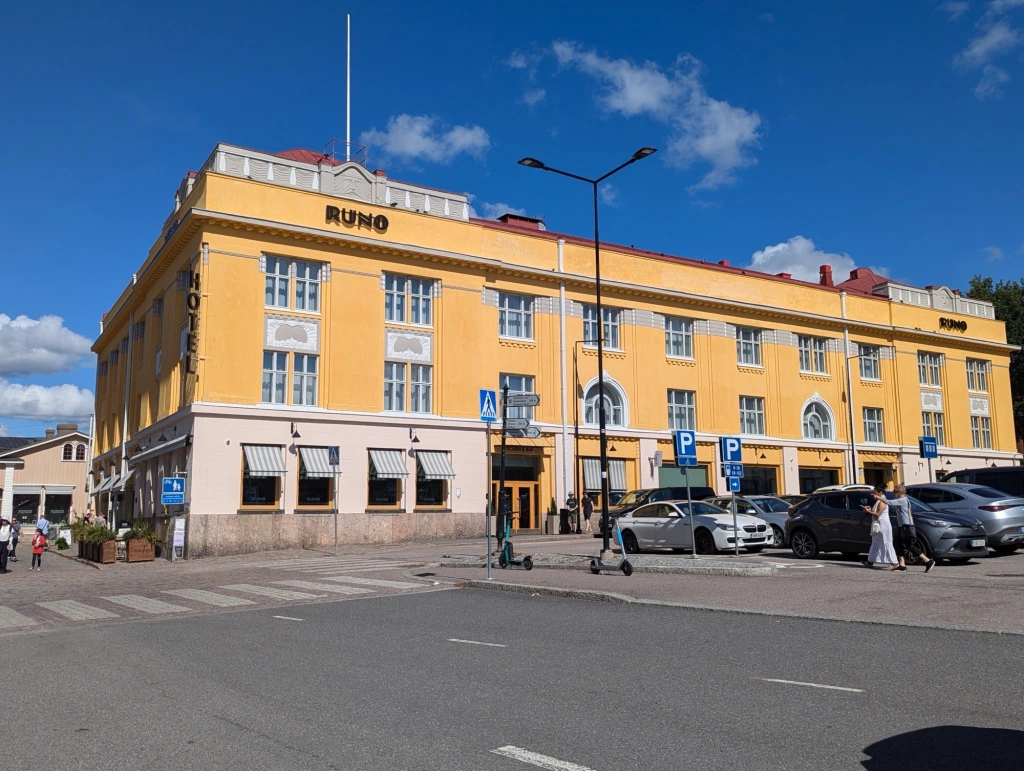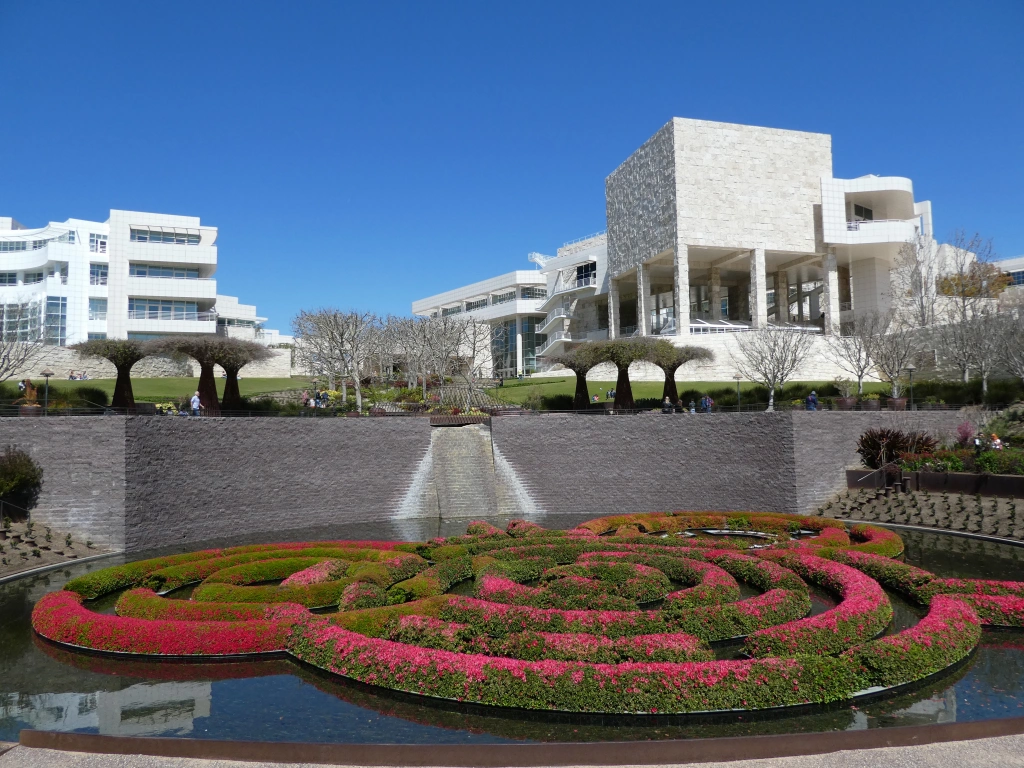After enjoying a delicious Scandinavian buffet breakfast at the Scandic Gothenburg Central we strolled along to the nearest tram stop to get us into the spirit of exploring a tram museum. Gothenburg Tram Museum is housed in an old tram depot not far from the city centre. We have a special affection for transport museums and always try to visit them wherever we might be. The one in Gothenburg is run by a group of dedicated volunteers and is only open on Sundays between 11.00 a.m. and 2.00 p.m. Fortunately this fitted in with our plans as we’d heard that it’s very special. Standard entrance is very modestly priced at SEK 40 (£2.94) which even includes a guided tour of the tram shed.
Gothenburg Tram Museum
We arrived just as it was opening and it was suggested that we look around the upstairs exhibition first as tours begin at 11.30 a.m. This worked well as we enjoyed browsing examples of 20th century tickets, machines, tram stop signs, and the changes in uniforms from the beginning of the 20th century up until the 1970’s. There were even dressing up clothes and I couldn’t resist the temptation of dressing up as a 1930’s conductress.
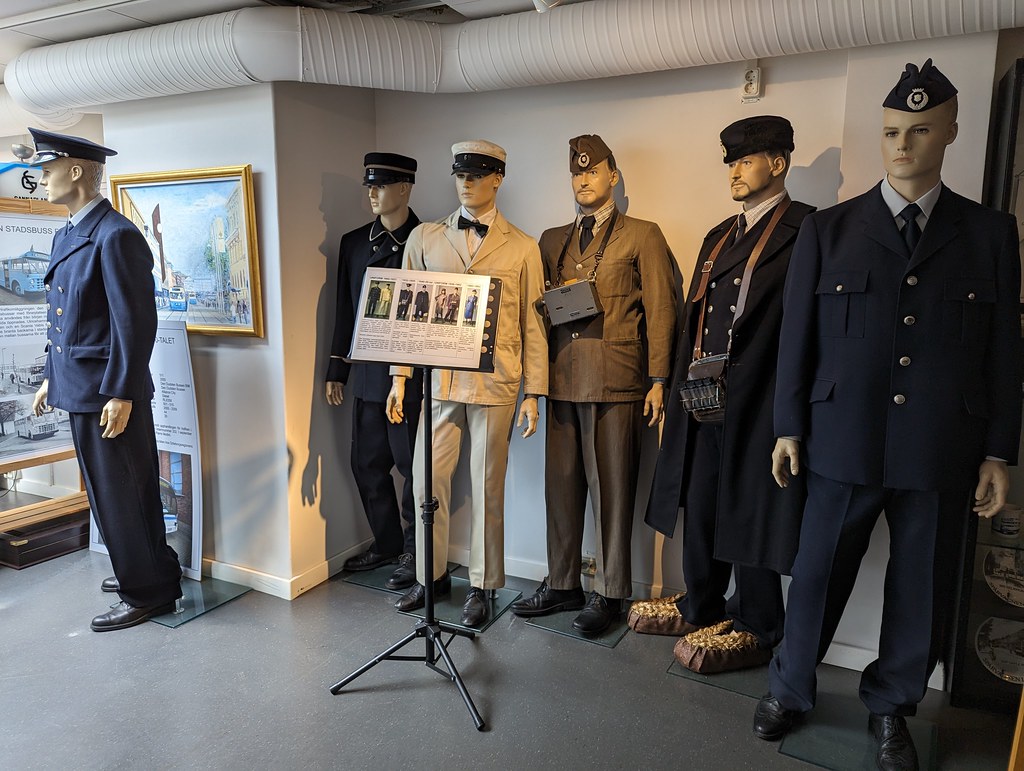
Tram uniforms through the ages
The upstairs gallery also offered video screenings of when the last trolley buses were in service on the streets of Gothenburg and an opportunity to drive a tram simulator with the types of controls found on trams in the 1930’s.
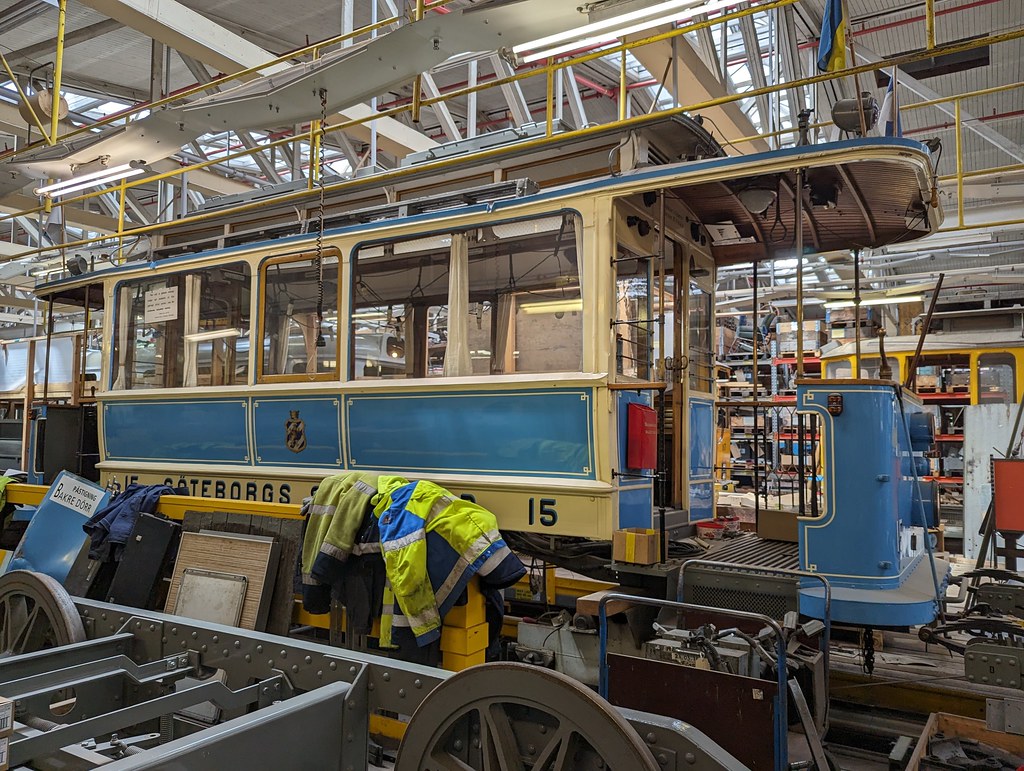
Trams on display at the museum
Back downstairs shortly before 11.30 a.m. visitors were divided into either the Swedish or English tour of the tram shed. There were just six on the English tour that morning comprising a family from Vienna, a gentleman from Rotterdam and ourselves. The guided tour was both interesting and informative with lots of information about the trams on display and best of all, an opportunity to clamber on board, sit on the polished wooden seats and take in the view from the driver’s cab.
The oldest tram on display was a horse drawn vehicle from the 1800’s whilst the newest was in use when the line to Angered first opened in 1969. The guided tour took just over an hour and was so absorbing that the time sped by. Our friendly guide explained that 15 of the 20 trams were in good working order and could be seen out in the city streets during summer weekends for nostalgic rides.
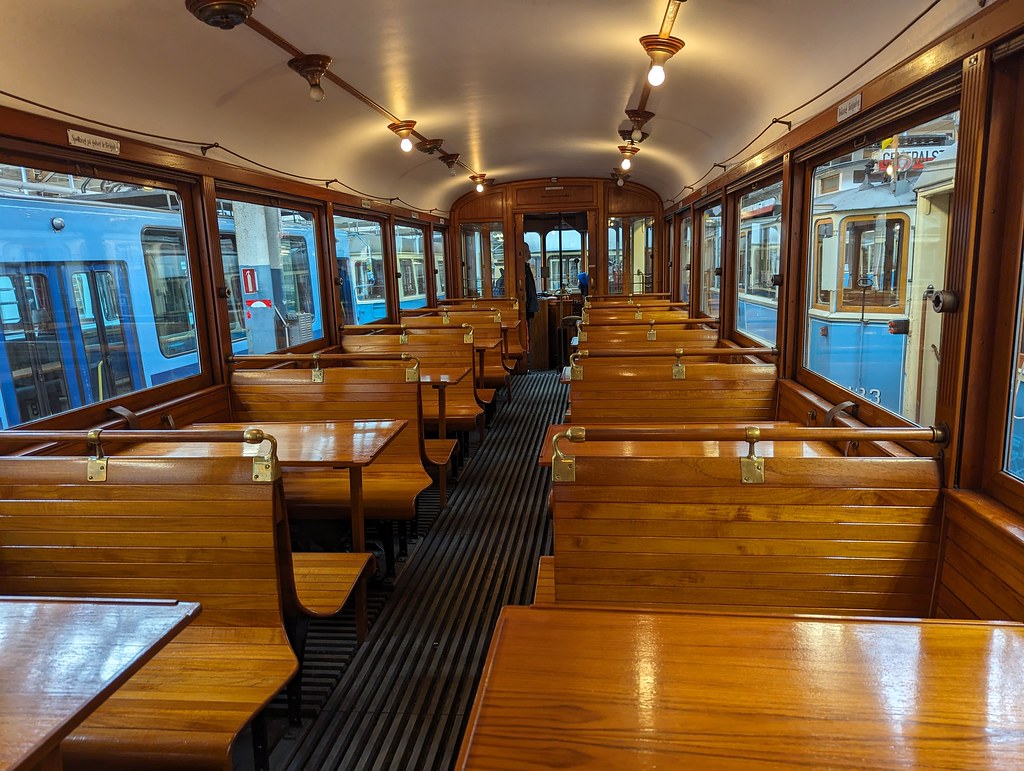
Interior of one of the heritage trams
If you share an interest in public transport do try to fit in a Sunday morning visit to the museum as it’s a hidden gem and operated by the friendliest team of volunteers possible.
Universeum
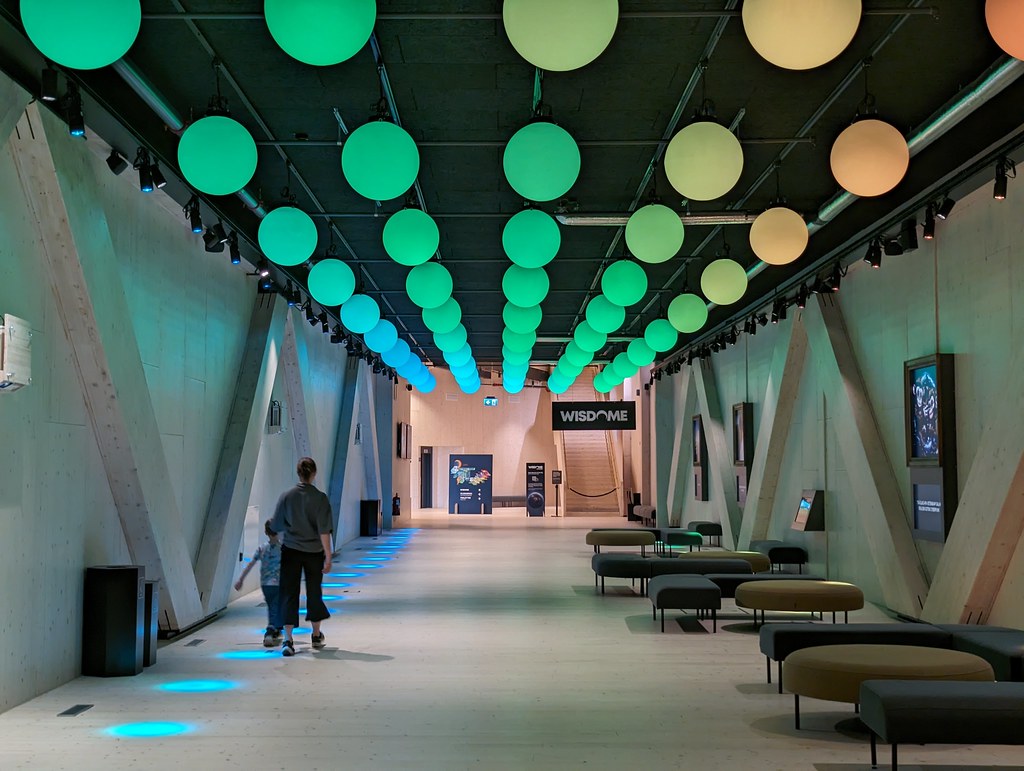
Universeum, Gothenburg
On leaving the old tram depot behind we boarded one of the city’s more modern fleet to take us to the Universeum, the largest science museum in Scandinavia. Standard admission SEK 225 (£16.53). Although styled a science centre, it’s actually part science, part aquarium and part rainforest all rolled into one superb building.
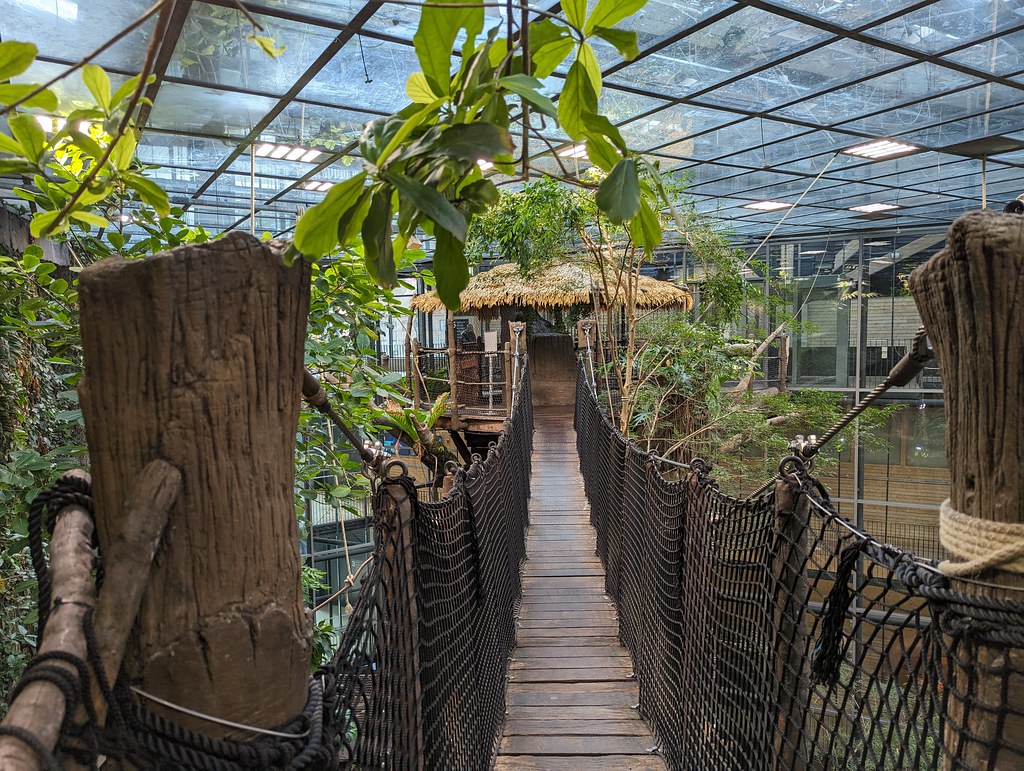
Rainforest Zone, Universeum
As we hadn’t had an opportunity for a coffee since breakfast we called into their ground floor cafe for morning cappuccinos and cinnamon buns before starting to explore the vast building beginning with the Rainforest zone. The huge rainforest jungle stretches through the centre of the building and is encased inside a giant cube.
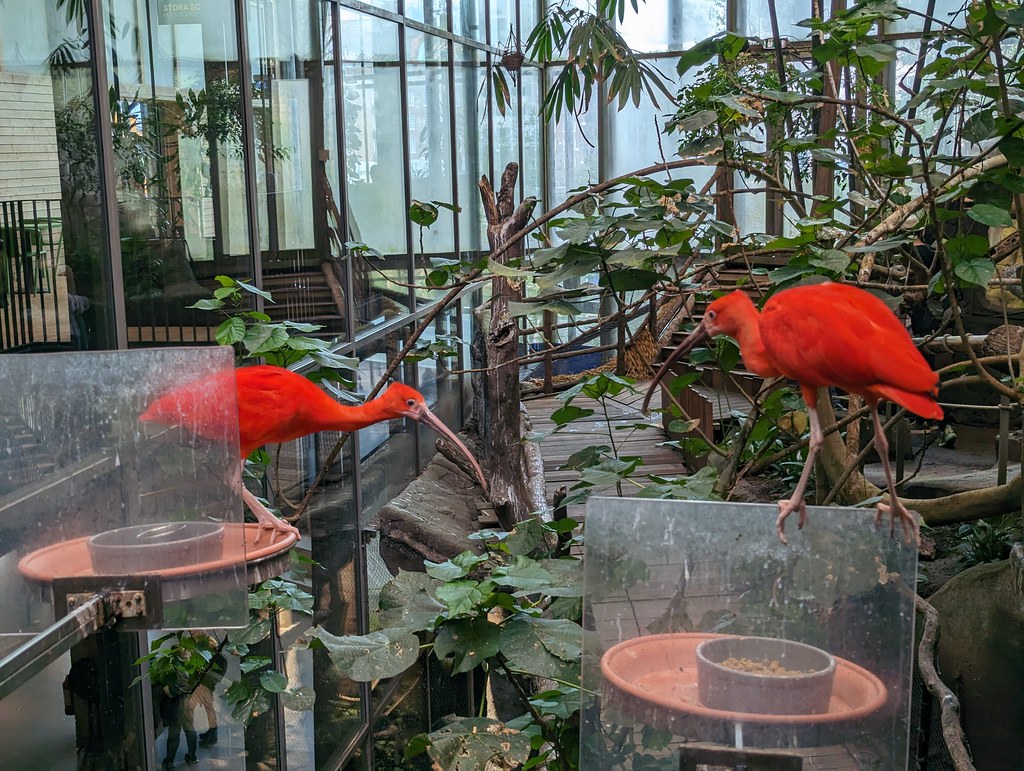
Red Ibis in the Rainforest Zone
It is so impressive that at times I thought I’d been transported back to an equatorial rainforest in Malaysia, with the intense heat and steamy conditions. We crossed rope bridges and clambered up steps to reach the top of the Kapok trees 25 metres high. Red Ibis and Toco Toucans could be seen perched on branches and flying overhead whilst monkeys and sloths stared at us along the narrow pathways.
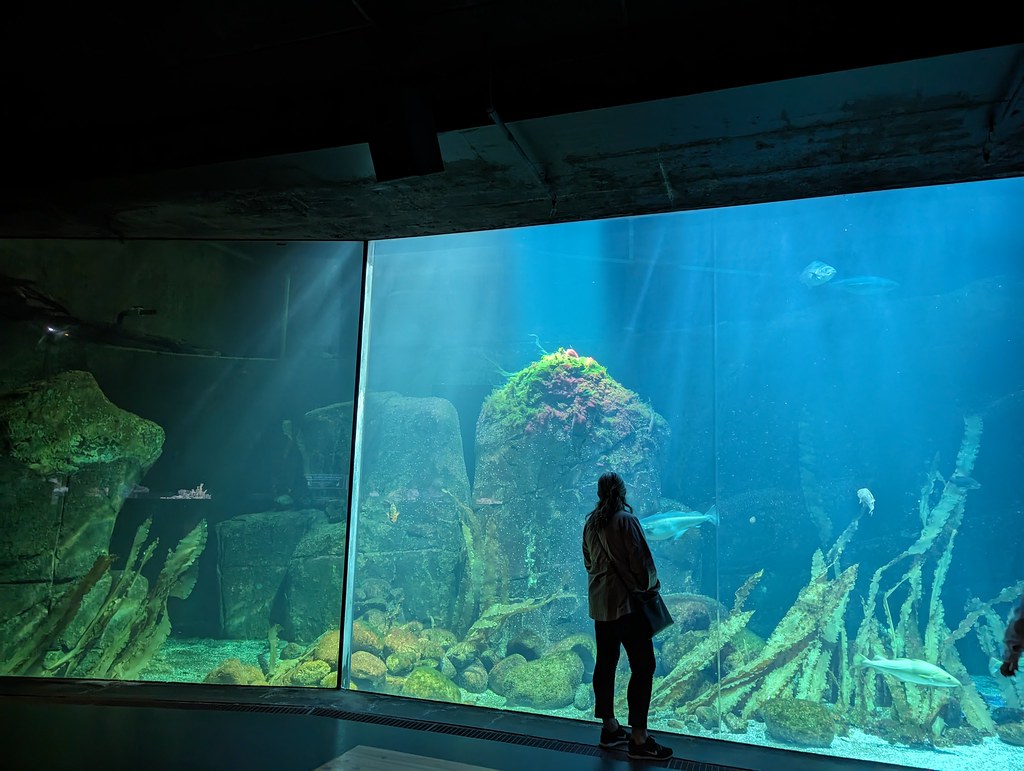
Aquarium, Universeum
This was by far my favourite element of the centre but we also enjoyed wandering through the tank tunnel in the Ocean Zone where we saw sharks gliding overhead, blue spotted stingrays and other colourful shoals of fish in the surrounding large tanks. The Reptilarium contained some of the deadliest snakes and lizards on earth including a king cobra and a common death adder so it was just as well they were securely behind glass.
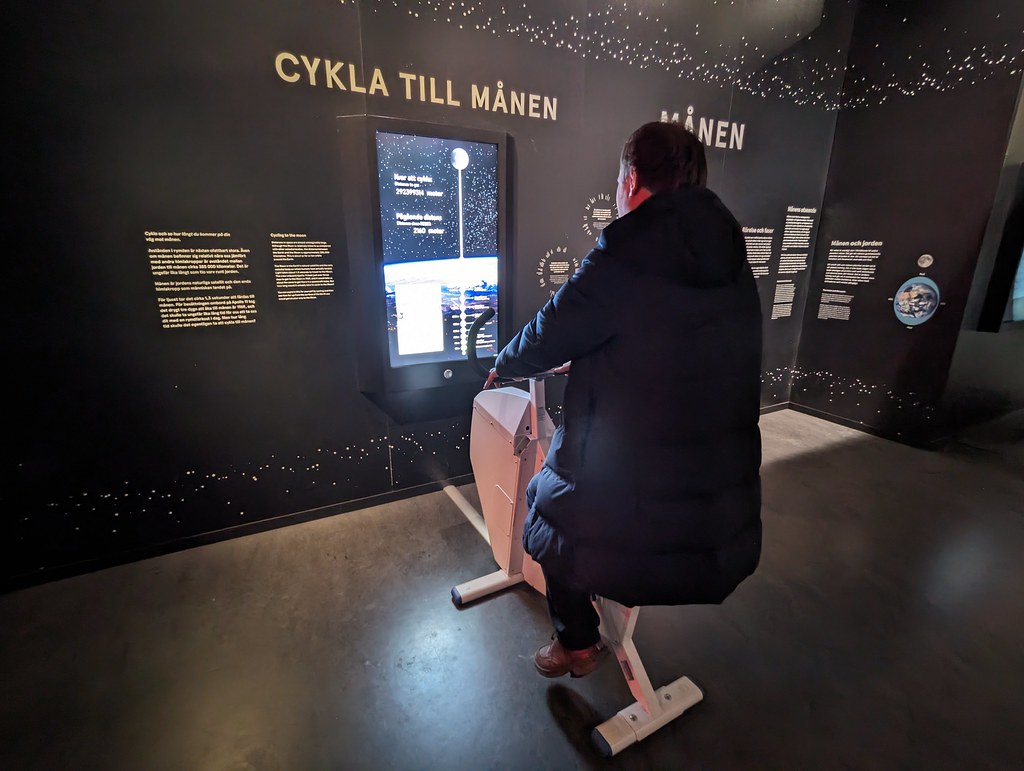
Cycling to the moon
The Science gallery explores science from tiny molecules to the vastness of space and has lots of interactive exhibits suitable for all ages. My son climbed on a bicycle to see how long it would take him to cycle to the moon. Needless to say he didn’t get very far. There was also a chance to land a lunar craft, discover how a space toilet worked and to feel what it must be like when walking on the moon.
Feskekörka Fish Market
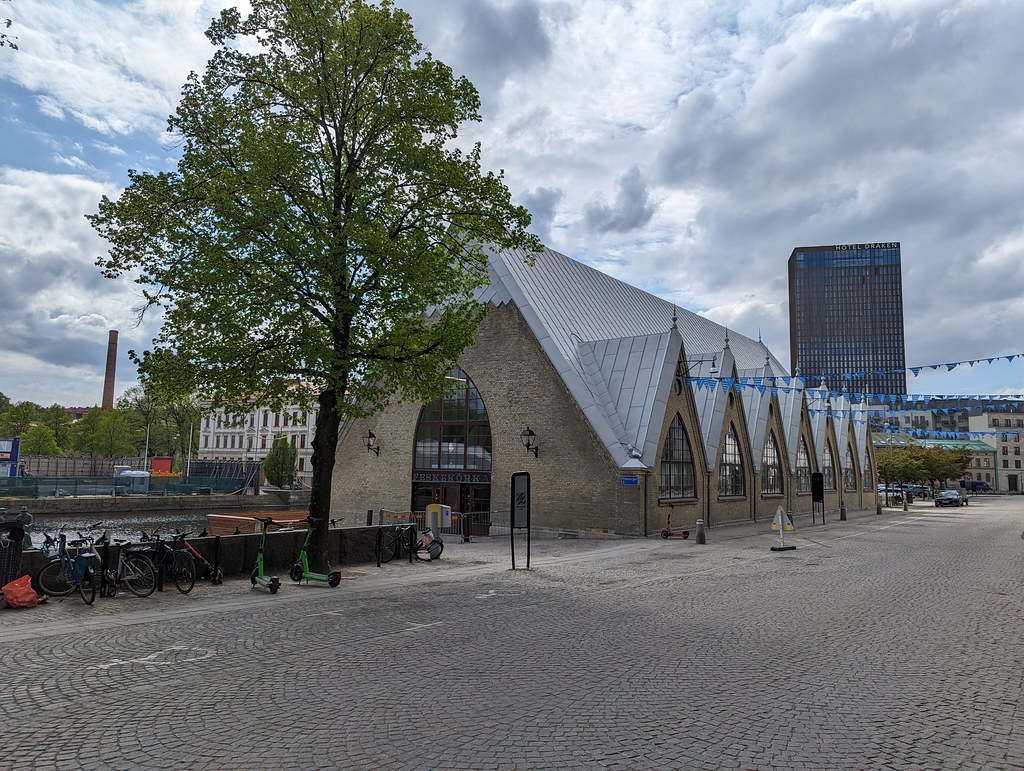
Fish Market Hall, Gothenburg
That completed our museum tour for the day so we jumped on yet another tram and headed towards the Haaga neighbourhood. On the edge of this district stands Feskekörka (fish church), a fish market hall located in one of the city’s most iconic buildings with its distinctive windows resembling a church. Sadly it wasn’t possible to look inside as the fish market has been closed for four years whilst undergoing major renovations but by the time you read this post it should have re-opened (early summer 2024). The newly styled market will boast a 20 metre fish counter and three seafood restaurants offering both indoor and outdoor seating.
Exploring the Haga district
Our afternoon stroll continued across the river into the charming Haga district which is one of the oldest parts of the city. It’s a delightful place for a wander with its charismatic wooden houses lined along the narrow cobblestone streets. These former working class homes have now been transformed into stylish boutiques, coffee shops, bookstores and vintage clothes stores and on a sunny Sunday afternoon it was bustling with locals and tourists alike.
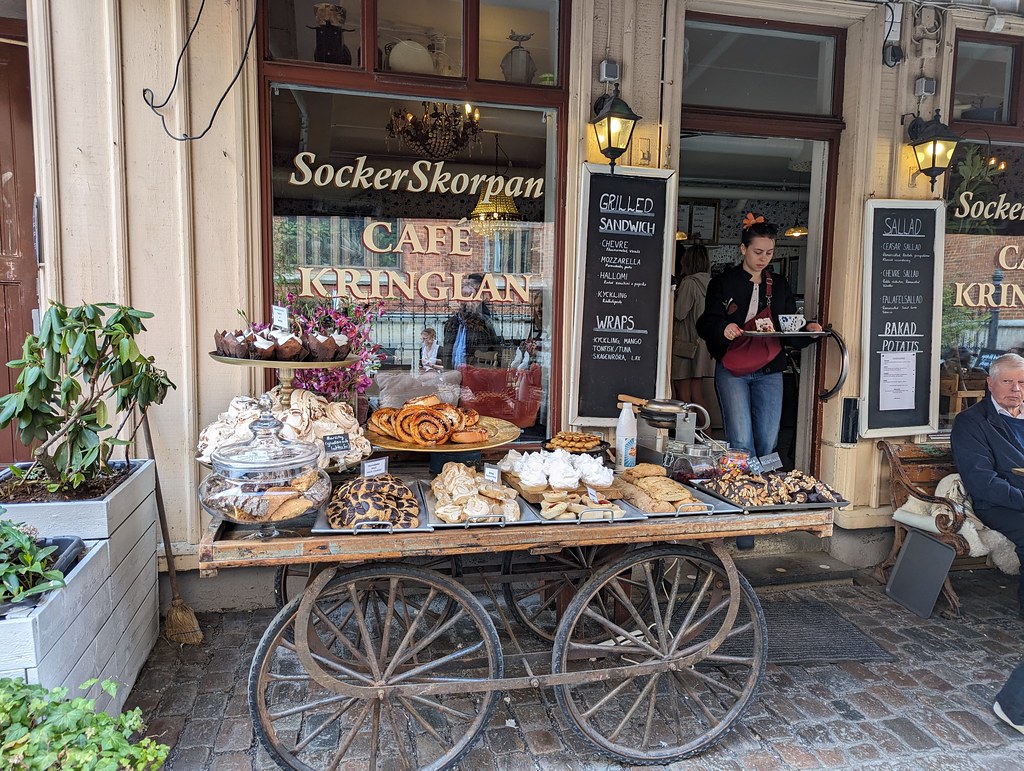
Haga District Gothenburg
Dominating the Haga skyline stands the Skansen Kronan fortress which is perched on a hill and was constructed in 1700 to help protect Gothenburg from Danish attack. The fortress is surrounded by cannons ready for battle but as it did not come under attack, they were never fired.
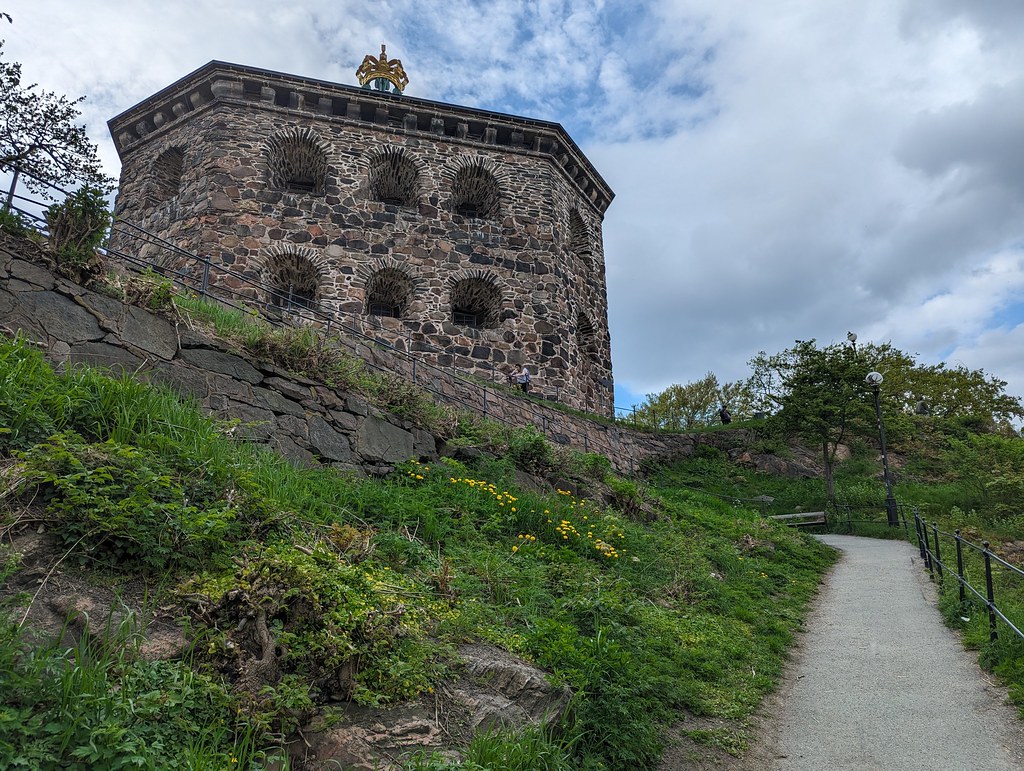
Skansen Kronan Fortress
The path up to the fortress is short but very steep, but do take the time to climb up if you can as the views overlooking the city from the top are far reaching. During the 19th century the fortress was turned into a prison. The building is now a popular venue for weddings and other events with a function taking place at the time of our visit. The hilltop is also a pleasant spot to enjoy a picnic with a cosy cafe located to one side.
Liseberg Amusement Park
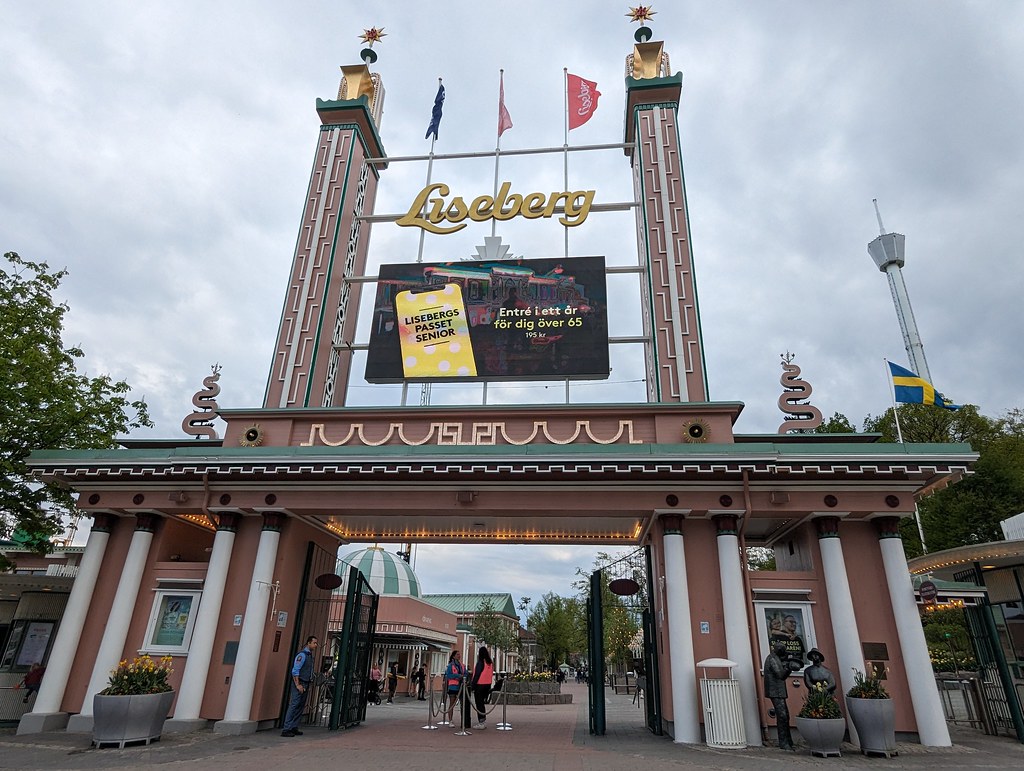
To complete a lovely day exploring Gothenburg we headed to the Liseberg Amusement Park which is the largest in Scandinavia and last year celebrated its 100th anniversary. Entrance tickets start at SEK 95 (£7) for admittance into the park and from SEK 365 (£26.83) to include rides. The park had only just opened for the season when we visited and its spring flower displays were absolutely beautiful.
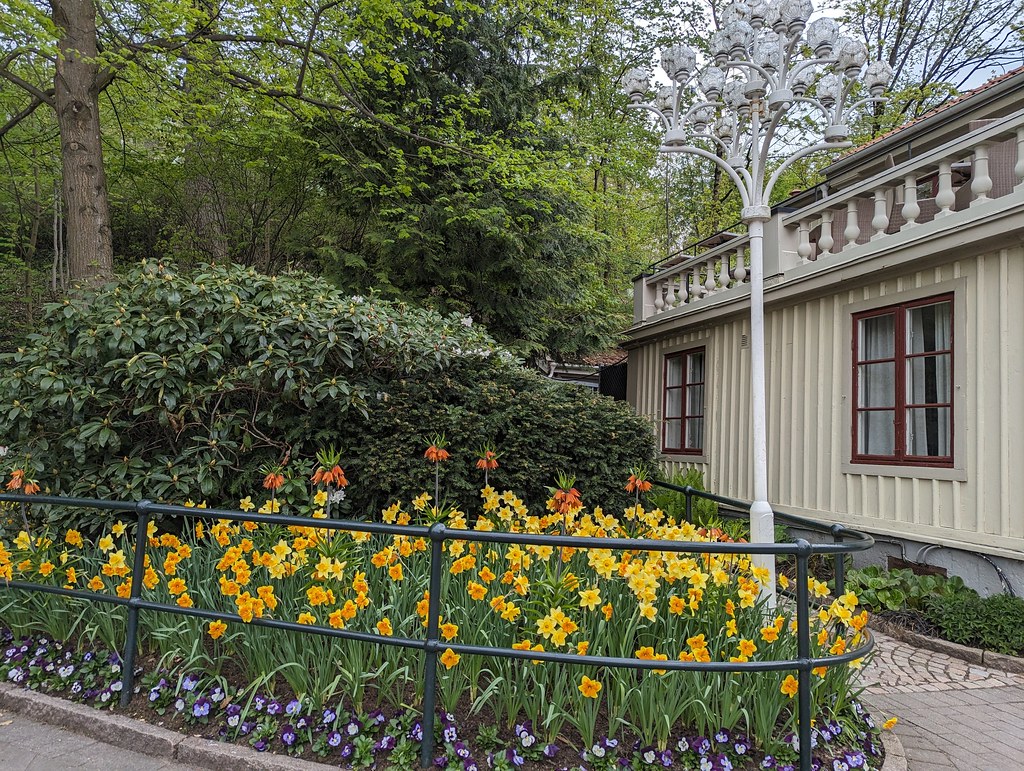
xThe park has something for everyone with its exquisite garden setting, historic buildings, cafes and restaurants. We wandered around watching thrill seekers riding rollercoasters such as AtmosFear and others getting soaked on Kollerado, the amusement park’s rapids.
Musical entertainment was taking place on the children’s stage and when we called into one of the food outlets for hot dogs we were pleasantly surprised to discover how inexpensive they were and most importantly, they tasted good too.
We enjoyed a fun couple of hours at Liseberg and were very impressed with the park’s overall appearance and tidiness and were pleased we had found time to visit.

